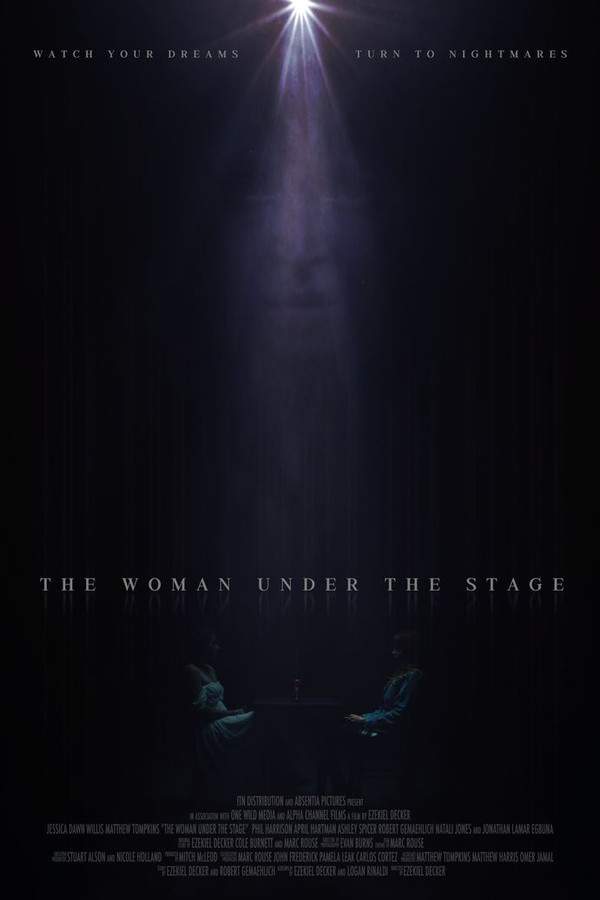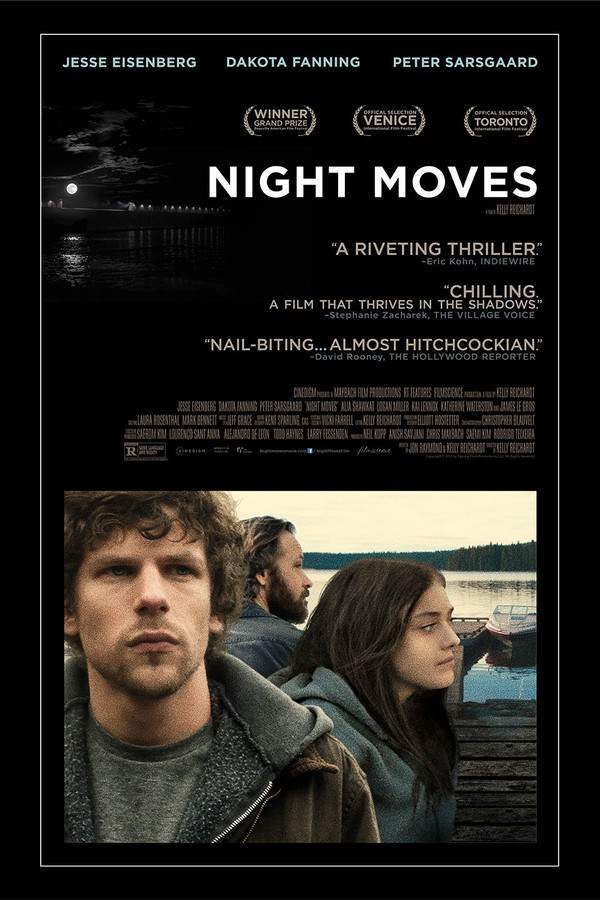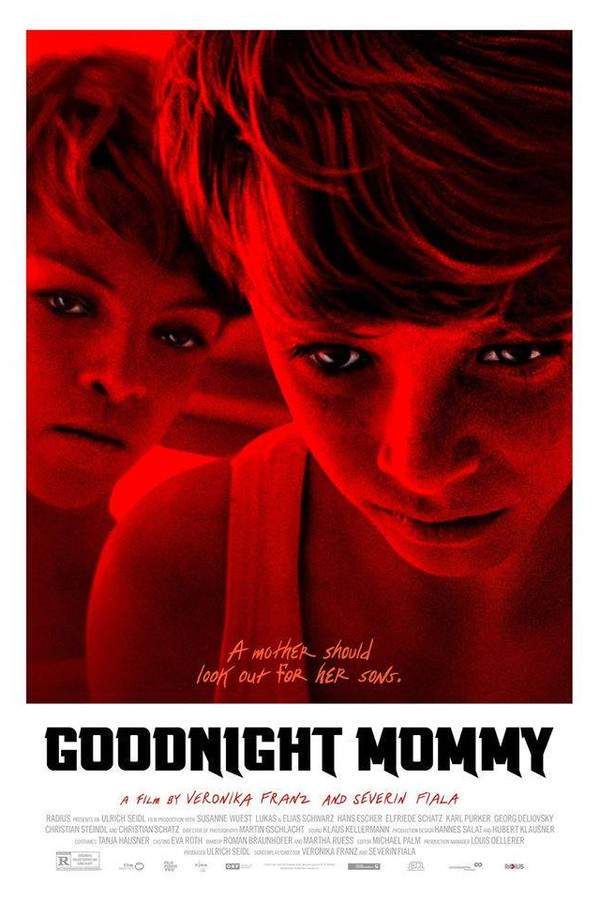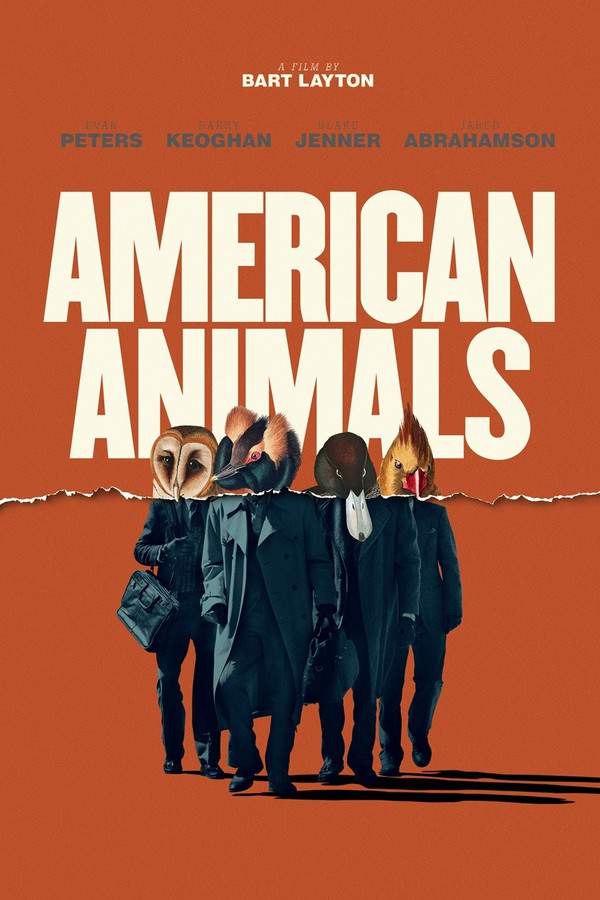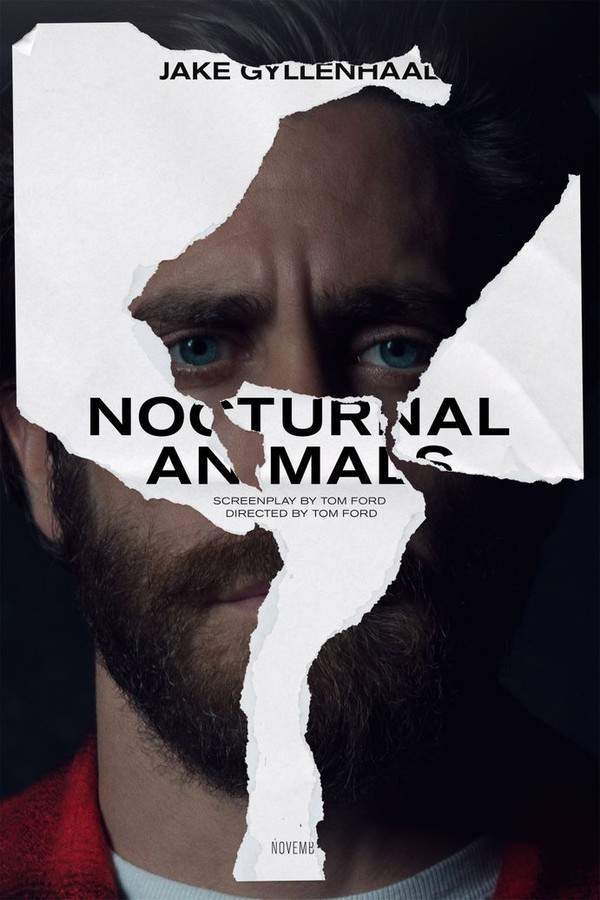
Nocturnal Animals 2016
Directed by

Tom Ford
Made by

Focus Features
Nocturnal Animals Plot Summary
Read the complete plot summary and ending explained for Nocturnal Animals (2016). From turning points to emotional moments, uncover what really happened and why it matters.
Women whirl in dance, while larger figures are showcased in an art gallery. The story follows Susan (played by Amy Adams), a gallery curator, as she navigates her lavish lifestyle in her multi-million dollar estate, all while overlooking the sparkling lights of Los Angeles. With staff and security at her disposal, she seems to dwell in luxury. One day, she receives a package from her ex-husband, Edward Sheffield. To her surprise, it contains a manuscript titled Nocturnal Animals, dedicated to her, hinting that she inspired his work. Edward intends to meet with her in Los Angeles, and Susan’s head of security inquires about staffing for the weekend. She requests solitude, quietly indicating her intention to read the manuscript.
That evening, Susan struggles to sleep, taking medication to combat her insomnia. The following morning, her husband Hutton (Armie Hammer) joins her for breakfast, and she expresses disappointment over his absence from her art show. He cites work commitments and far travel, while she infers that he’s avoiding the truth, insisting she wasn’t asleep until late into the night. As discussion turns to Edward, Hutton reveals his ignorance about Edward’s career, leading Susan to recall their distant past. As their conversation shifts back to Hutton’s business trip to New York, she dismissively remarks on his lack of interest in art.
Susan begins to delve into the Nocturnal Animals manuscript. The first chapter introduces Tony Hastings (portrayed by Jake Gyllenhaal), embarking on a road trip with his daughter and wife, Laura (played by Isla Fisher). The family encounters an electrifying trip through Texas, encountering ominous delays—two cars silently pacing alongside one another until antagonism ensues. What starts as playful banter gradually shifts into a harrowing situation as they realize they are being pursued by three sinister men in one of the vehicles.
As the confrontation escalates, the harasser, a menacing redneck (played by Aaron Taylor-Johnson), arrives to confront Tony, questioning his refusal to pull over. Desperate and sensing danger, Tony keeps his family in the car, leading to a terrifying exchange. As Tony weighs his options, the situation spirals out of control with the redneck’s menacing taunts. Engulfed in desperation, he attempts to call the police only to find the signal lacking.
From here, we learn tragedy strikes as his family is taken from him, leading further into the dark themes of fear and violence. Tony’s struggle to comprehend his perceived failures hammers in as his journey only worsens with every page Susan turns. Then, returning to Susan’s perspective, tension rises as she grapples with the chilling story while simultaneously attempting to reach out to her own daughter, who shares a striking resemblance with the girl in Edward’s novel.
Meanwhile, the lines between Susan’s past and present meld together as she recalls moments from her relationship with Edward, reflecting on their dinner when their connection flourished against the backdrop of memories, parallel to the unfolding tragedy in the manuscript. As the narrative progresses, so does the suspense—Tony’s reach for justice intertwines with Susan’s realization of her own regrets.
Eventually, the adrenaline culminates in a climactic showdown between Tony and the abductor, leading to the discovery of harrowing truths about loss and revenge, mirroring Susan’s own fraught emotions. In stark contrast to her extravagant lifestyle, Susan reflects on her choices and the emotional upheaval that defines her life.
As she completes the manuscript, the weight of its impact dawns on her—prompting an email to Edward, suggesting they meet. However, as she prepares for their reunion, time stretches painfully as she realizes Edward never arrives. The betrayal strikes hard; the culmination of memories and decisions echo—setting the stage for bitter reflections on love, loss, and the fruits of abandoning one’s true self. In a twist of fate, the book’s poignancy unearths the depths of betrayal, leaving Susan alone with her turmoil, as she understands far too late the significance of Edward’s narrative—a haunting reverberation of fate across both their stories.
Nocturnal Animals Timeline
Follow the complete movie timeline of Nocturnal Animals (2016) with every major event in chronological order. Great for understanding complex plots and story progression.
Susan's Lavish Lifestyle
The story begins by establishing Susan's opulent life as a gallery curator, living in a stunning estate overlooking Los Angeles. Surrounded by staff and security, she embodies luxury but remains emotionally isolated.
Package from Edward
One day, Susan receives a surprising package from her ex-husband, Edward Sheffield. Inside the package is a manuscript titled *Nocturnal Animals*, dedicated to her, which reignites old memories and emotions.
Edwards's Intent
Edward's intention to meet Susan in Los Angeles raises her curiosity and anxiety. Her head of security asks about staffing for the weekend, but Susan opts for solitude, indicating her desire to read the manuscript alone.
Struggles with Insomnia
That evening, Susan battles insomnia, taking medication to help her sleep. The weight of her unresolved feelings about Edward begins to seep into her psyche, marking a transition into the deeper narrative of the manuscript.
Breakfast with Hutton
The morning after, Susan shares breakfast with her husband Hutton, who expresses his regrets about missing her art show. Their conversation highlights the growing chasm in their relationship as she feels neglected and dismissed.
Reading the Manuscript
Susan starts reading the *Nocturnal Animals* manuscript, which introduces Tony Hastings embarking on a family road trip. The onset of a seemingly normal journey hints at the impending tension and danger ahead.
The Ominous Encounter
As the family travels through Texas, they encounter two cars that seem to follow them ominously. What begins as mere discomfort escalates into a threatening situation, foreshadowing the chaos that is about to unfold.
Confrontation with the Redneck
The tension culminates when Tony is confronted by a menacing redneck who questions his refusal to pull over. Desperation sets in as Tony chooses to keep his family inside the car amidst escalating threats.
Tragedy Strikes
The story takes a dark turn as tragedy strikes Tony's family, leaving him to grapple with the consequences of violence and his inability to protect them. Susan feels the weight of the narrative echoing her own emotional turmoil.
Susan's Reflection
As Susan reads on, she is haunted by memories of her past with Edward and their relationship. The painful parallels between Tony's experiences and her own life choices begin to crystallize.
Climactic Showdown
The manuscript builds toward a climactic showdown between Tony and his family's abductors. This moment serves as a poignant metaphor for Susan's internal struggles regarding her regrets and past decisions.
Email to Edward
After finishing the manuscript, Susan feels compelled to reconnect with Edward, sending him an email to suggest a meeting. This act signifies her recognition of the impact of his narrative on her life.
Betrayal and Reflection
As Susan prepares for the anticipated reunion, she is struck by the realization that Edward never arrives. This moment marks the culmination of her reflections on love and betrayal, enveloping Susan in solitude once more.
Understanding the Narrative
The haunting narrative of *Nocturnal Animals* serves as a lens through which Susan views her own life. She confronts the painful truths of her choices, mirroring the themes of loss and revenge that pervade Edward's story.
Emotional Upheaval
The emotional weight of Edward's manuscript reverberates within Susan, leaving her alone with her internal turmoil. She reflects on her life choices, realizing how profoundly they intertwine with the fate of both her and Edward.
Nocturnal Animals Characters
Explore all characters from Nocturnal Animals (2016). Get detailed profiles with their roles, arcs, and key relationships explained.
Susan (Amy Adams)
Susan is a complex character grappling with the choices she has made in her life. As a gallery curator, she embodies sophistication and success, yet internally, she battles with feelings of regret and emotional turmoil. Her journey deepens as she confronts the haunting implications of Edward's manuscript, forcing her to reflect on love and betrayal.
Edward Sheffield
Edward, Susan's ex-husband, serves as both a haunting presence and a catalyst for Susan's introspection. His dedication of the manuscript to her signifies unresolved feelings and makes her confront their shared past. Edward's struggles with his artistic integrity and personal pain echo throughout the narrative, illuminating themes of love, loss, and revenge.
Tony Hastings (Jake Gyllenhaal)
Tony is depicted as a devoted family man whose life takes a tragic turn during a road trip. His character embodies resilience in the face of overwhelming fear and loss, as he becomes embroiled in a harrowing pursuit. Through his journey, viewers witness the depths of his anguish and desperation, ultimately leading him to seek justice against those who have wronged him.
Laura (Isla Fisher)
Laura, Tony's wife, represents the innocent victim whose fate hinges on a terrifying turn of events. Her character serves as a contrast to the escalating tension of the story, highlighting the stakes of family and safety amidst chaos. Laura's presence adds emotional depth to Tony's struggle and the anguish caused by their ordeal.
Redneck (Aaron Taylor-Johnson)
The redneck serves as the primary antagonist, embodying menace and brutality. His character escalates the conflict during Tony's road trip, pushing the narrative into darker territories. This figure of terror is crucial in understanding the themes of fear and violence that permeate the story.
Nocturnal Animals Settings
Learn where and when Nocturnal Animals (2016) takes place. Explore the film’s settings, era, and how they shape the narrative.
Time period
The film takes place in contemporary times, evident through the characters' interactions and their luxurious lifestyles. This modern setting allows for a nuanced exploration of personal relationships and the impact of past choices on present realities.
Location
Los Angeles, Texas
Los Angeles serves as the backdrop for Susan's lavish lifestyle, where she navigates her career as a gallery curator. Known for its vibrant art scene and glamorous life, the city contrasts sharply with the tense road trip through Texas, where Tony and his family encounter danger. Texas is recognized for its vast landscapes and often unpredictable nature, which play a crucial role in the unfolding of the story.
Nocturnal Animals Themes
Discover the main themes in Nocturnal Animals (2016). Analyze the deeper meanings, emotional layers, and social commentary behind the film.
💔
Loss
The theme of loss permeates both Susan's life and the manuscript's narrative, revealing the emotional scars that linger beyond the surface. As Susan grapples with regret over her past relationship with Edward, Tony's tragic journey underscores the destructive nature of violence and loss. This interconnectedness deepens the impact of their respective struggles, painting a poignant picture of grief and reflection.
⚖️
Revenge
Revenge is intricately woven into the narrative of Tony's manuscript, where his quest for justice following his family's abduction drives the tension. This theme parallels Susan's emotional journey, as she contemplates revenge against her own choices and the betrayals they entail. Both characters are forced to confront the consequences of their decisions, leading to a profound yearning for resolution.
🎨
Art and Identity
The film intricately explores the relationship between art and identity, particularly through Susan's role as a gallery curator. As she engages with Edward's manuscript, the layers of artistic expression reflect her internal conflict and sense of self. The narrative ultimately challenges the characters to reconcile their identities with their past and present lives, highlighting the influence of art on personal understanding.
Nocturnal Animals Ending Explained
Unravel the ending of Nocturnal Animals (2016) with our detailed explanation. Understand the final scenes, character fates, and unresolved questions.
The ending of Nocturnal Animals is haunting and layered with meaning, blending reality with fiction in a way that leaves viewers reflecting on the characters’ emotional states. Throughout the film, Edward, played by Jake Gyllenhaal, sends a manuscript of his dark, revenge-filled novel to his ex-wife, Susan. Her immersion in the story about Tony, a man driven to seek brutal revenge after the trauma of losing his wife and daughter, mirrors her own feelings about their broken relationship. As Edward mourns his unfulfilled love and professional insecurities, Tony’s story serves as a metaphor for his inner pain and desire for vengeance.
In the film’s climax, Edward never appears in person to confront Susan or to exact his revenge. Instead, he allows his novel to act as a cold, emotional strike: Susan reads the story and is left to grapple with her past betrayals—most notably her infidelity with Hutton, her second husband. The film suggests that Edward’s act of giving her this dark, powerful story is his way of telling her that he still harbors deep resentment, but he doesn’t seek closure by physical confrontation. His silence and absence at the end imply that the revenge was more about emotional release than about reconciliation.
The finale reveals Susan alone, realizing that her attempt at reconnecting with Edward was doomed from the start. She waits at a restaurant until closing, her solitude reflecting her current emotional emptiness. Meanwhile, the novel’s story, especially Tony’s grim cycle of violence and regret, underscores that revenge often leaves people unchanged and unfulfilled—an idea that resonates with Susan’s loneliness and her own moral dilemmas. The story of Ray, Tony’s vengeful antagonist who kills Tony’s family and ultimately dies bloodied and exhausted, symbolizes the destructive nature of revenge. It shows how violence and vengeance only perpetuate pain, leaving characters like Tony—and by extension, Edward—still broken and searching for peace.
Ultimately, Nocturnal Animals doesn’t provide a clear resolution but instead offers a poignant meditation on heartbreak, vengeance, and despair. Both Edward and Tony crave retribution—Edward by aiming to emotionally damage Susan, and Tony by seeking justice for his loved ones. Yet, the film’s ending indicates that revenge is an empty pursuit; both characters are left scarred and unable to return to happiness. The film’s ambiguous conclusion, coupled with its dark themes and layered storytelling, invites viewers to consider whether true closure is ever possible or if everyone is ultimately haunted by their past, destined to remain imperfect, broken souls.
Movies with Similar Twists and Themes
Uncover films that echo the narrative beats, emotional arcs, or dramatic twists of the one you're exploring. These recommendations are handpicked based on story depth, thematic resonance, and spoiler-worthy moments — perfect for fans who crave more of the same intrigue.
Featured on this page

What's After the Movie?
Not sure whether to stay after the credits? Find out!
Explore Our Movie Platform
New Movie Releases (2025)
Famous Movie Actors
Top Film Production Studios
Movie Plot Summaries & Endings
Major Movie Awards & Winners
Best Concert Films & Music Documentaries
Movie Collections and Curated Lists
© 2025 What's After the Movie. All rights reserved.







